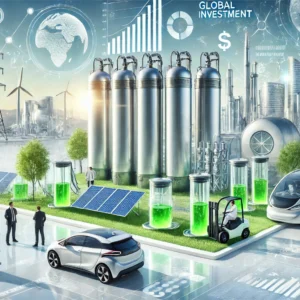
In our era of unprecedented climate challenges, the debate over geoengineering—especially the concept of reflecting sunlight to cool our planet—has sparked both controversy and hope. This intriguing approach to mitigating climate change has attracted attention from government officials, researchers, celebrities, and everyday citizens alike. In the race against global warming, geoengineering has emerged as a futuristic yet polarizing solution that some say could buy us time while we transition to sustainable energy. Here, we explore the multifaceted world of solar radiation management, its scientific underpinnings, political ramifications, societal opinions, and economic prospects, weaving together perspectives that range from the rigor of research labs to the casual commentary of social media influencers.
The Science Behind Reflecting Sunlight
Geoengineering, in its broadest sense, refers to deliberate large-scale interventions in the Earth’s natural systems to counteract climate change. One such method, solar radiation management (SRM), focuses on reflecting a small fraction of sunlight back into space to lower global temperatures. Proponents argue that even a slight reduction in incoming solar energy could offset some effects of greenhouse gas emissions.
Recent breakthroughs in aerosol injection techniques, inspired by natural phenomena like volcanic eruptions, are being tested in controlled experiments. These experiments, conducted at renowned institutions like the Harvard Solar Geoengineering Research Program and the UK’s Rutherford Appleton Laboratory, involve dispersing tiny reflective particles into the upper atmosphere. Early findings indicate that such interventions could potentially lower temperatures by 1–2°C under certain scenarios, though the long-term environmental impacts remain under intense scrutiny.
While the science behind SRM is captivating, many experts caution that the approach is not a silver bullet. The technique does not address the root cause of climate change—the accumulation of greenhouse gases—and could trigger unforeseen consequences, such as changes in regional weather patterns and disruptions in rainfall.
For more scientific insights, refer to Harvard’s Geoengineering Research and Rutherford Appleton Laboratory updates.
Government Initiatives and Regulatory Perspectives
Governments worldwide have started to acknowledge geoengineering as a potential, albeit controversial, tool in the climate arsenal. Several administrations have initiated public consultations and research funding to explore the feasibility of SRM. For instance, the European Commission has allocated millions of euros towards geoengineering research under its Horizon Europe framework, emphasizing the need for stringent risk assessments and international regulatory frameworks.
In the United States, recent legislative debates in Congress have spotlighted the balance between innovation and precaution. Lawmakers are grappling with whether to support research that could lead to a temporary reprieve from warming or to impose heavy restrictions out of fear of unintended consequences. Political divides are stark—while some see geoengineering as a necessary hedge against climate disaster, others label it a dangerous diversion from the critical task of reducing carbon emissions.
Political news outlets such as Reuters and BBC have covered these debates extensively, reporting on heated congressional hearings where experts presented conflicting views. Some argue that with proper oversight, geoengineering could serve as a bridge while renewable technologies scale up, whereas critics insist that diverting attention from decarbonization strategies is a dangerous gamble.
Stay updated with political developments on geoengineering at Reuters Climate News and BBC Environment.
Research Labs and Scientific Pioneers
The forefront of geoengineering research is a dynamic realm where theoretical models meet experimental trials. Leading research labs and scientists are pushing the envelope, employing advanced computational models and high-altitude experiments to better understand the potential impacts of reflecting sunlight.
At the University of Cambridge, researchers have been simulating the dispersion of reflective aerosols using climate models that integrate atmospheric chemistry, oceanic patterns, and land surface dynamics. Their results, though preliminary, suggest that carefully calibrated interventions might reduce peak temperatures in vulnerable regions. Yet, the models also warn of complex feedback loops—small errors in simulation parameters can lead to significant variations in projected outcomes.
Similarly, in Asia, collaborative projects between Japanese and South Korean institutes are investigating alternative SRM techniques. These teams are exploring the use of engineered nanoparticles that could mimic the cooling effects of natural cloud formations. The interdisciplinary nature of these studies—blending meteorology, material science, and ethics—highlights the enormous scientific challenges and opportunities in this field.
However, scientists are quick to remind us that these experiments are in the early stages. The uncertainty surrounding long-term ecological effects and the ethical implications of deliberately altering the planet’s climate make it a subject of intense debate among the global scientific community.
For further reading on cutting-edge research, explore articles on Nature Climate Change and ScienceDirect.
Political Debates and Policy Perspectives
Political opinions on geoengineering vary dramatically across the globe. In Washington, D.C., and Brussels alike, the debate is as much about governance as it is about technology. Some policymakers advocate for a proactive research agenda, arguing that geoengineering could serve as a vital stopgap measure in a world where climate change accelerates faster than anticipated. Others caution that embracing such drastic measures might lead to geopolitical instability, especially if unilateral actions are taken by powerful nations.
During a recent summit in Geneva, international diplomats discussed the creation of a binding framework to regulate geoengineering activities. The talks underscored concerns about “moral hazard”—the idea that the promise of a technological fix might reduce the urgency of cutting greenhouse gas emissions. Critics point to the possibility of “technological lock-in,” where overreliance on geoengineering could derail investments in renewable energy and energy efficiency.
Interestingly, political leaders from unexpected quarters have also weighed in. For instance, a prominent senator from the U.S. described geoengineering as “an experimental bridge to a greener future,” while a European commissioner warned of its potential to become “the Pandora’s box of our time.” These conflicting viewpoints underscore the complexity of integrating geoengineering into national and international climate strategies.
Learn more about these political discussions at The Guardian Environment and CNBC Climate News.
Celebrity, Sports, and Business Voices
When it comes to climate change, the voices of celebrities, athletes, and business moguls often add a splash of glamour and pragmatism to the discourse. High-profile figures have not shied away from commenting on geoengineering. Hollywood star Leonardo DiCaprio, known for his environmental activism, recently expressed cautious optimism about geoengineering initiatives, emphasizing the need for transparency and public debate. “It’s a tool in our arsenal, not the entire solution,” he remarked in an exclusive interview.
In the realm of sports, globally renowned athletes have occasionally mentioned the impacts of climate change on their sporting events—such as heatwaves affecting the quality of play or scheduling. Some have even endorsed research into geoengineering as a way to safeguard future tournaments. Business leaders, notably tech entrepreneurs and energy magnates, see geoengineering as a potential market opportunity. Billionaires like Bill Gates have invested in startups exploring innovative SRM methods, believing that successful geoengineering could open a lucrative new sector in climate tech.
However, not everyone is on board with the celebrity endorsement. Critics argue that high-profile backing might oversimplify the scientific challenges and ethical dilemmas involved. Nevertheless, these public figures contribute to a broader dialogue that spans beyond scientific circles and influences public opinion, investment flows, and policy directions.
For a deeper dive into celebrity and business insights, check out Forbes Climate and Bloomberg Environment.
Intergenerational Perspectives: The Wisdom of Elders and the Passion of Youth
The conversation around geoengineering is enriched by a diversity of voices spanning generations. Many older citizens, having witnessed decades of environmental change, often express a mix of skepticism and cautious hope. They recall eras when climate change was a distant concern and are now navigating the complexities of rapid technological advancements. Some elders reminisce about times when local environmental quality was taken for granted, expressing a desire for a return to simpler, cleaner days while recognizing the inevitability of modern interventions.
In contrast, the younger generation brings a fiery, uncompromising energy to the debate. Young activists and students, who are digital natives, utilize platforms like Twitter, Instagram, and TikTok to advocate for immediate, bold action on climate change. They are vocal in demanding that geoengineering should be part of a broader, integrated strategy that prioritizes sustainability and social justice. “We can’t wait for slow policy changes,” one young activist commented during a recent online forum. “If geoengineering is to help, it must be combined with rapid decarbonization and equitable policies.”
This generational divide, while sometimes marked by tension, also offers a unique opportunity for learning and compromise. The wisdom of older generations, tempered by experience, can provide valuable context to the youthful drive for innovation and urgency. Both perspectives are crucial in shaping policies that are scientifically sound, socially acceptable, and ethically responsible.
For more on intergenerational climate dialogues, visit Climate Outreach and Youth Climate Action.
Global Business, Revenue Prospects, and Economic Considerations
The geoengineering debate extends far beyond scientific and ethical discussions—there are significant economic implications at stake. The potential for geoengineering to generate new revenue streams is attracting interest from investors and global businesses. Proponents argue that a successful solar radiation management strategy could lead to the creation of a new industry sector, complete with job opportunities, export potentials, and innovative financial instruments such as carbon credits.
Several multinational corporations have begun exploring partnerships with research institutions to develop commercial applications of SRM technologies. In Europe, early pilot projects have already secured venture capital investments in the tens of millions, while in Asia, government-backed initiatives are integrating geoengineering into national climate plans with substantial fiscal incentives.
Yet, the financial landscape is riddled with uncertainties. Analysts warn that the unpredictable nature of geoengineering interventions could lead to market volatility. Additionally, the risk of regulatory changes and international disputes over geoengineering activities might further complicate investment strategies. Despite these concerns, the buzz around potential earnings has spurred considerable market interest, with forecasts suggesting that by 2030, the geoengineering market could be valued at billions of dollars globally.
For the latest on market trends and economic analyses, check Financial Times Climate and Bloomberg Green.
Important Dates, Timetables, and Key Locations
While geoengineering research is still in its developmental stages, several critical milestones and planned projects are already on the calendar:
-
Early 2025:
- Research Milestone: Preliminary trials of aerosol injection methods are expected to be completed at leading research facilities in Europe and North America.
- Policy Roundtable: A global summit, hosted by the United Nations, will convene experts to discuss regulatory frameworks and ethical guidelines for SRM technologies.
-
Mid-2025:
- Pilot Projects: Test sites in regions such as the American Southwest and the Mediterranean are slated to begin controlled geoengineering experiments.
- International Review: Agencies like the U.S. Department of Energy and the European Environment Agency will release comprehensive reviews of geoengineering research progress.
-
Late 2025 and Beyond:
- Deployment Discussions: Ongoing discussions in international forums will focus on potential full-scale implementation strategies and contingency plans for unforeseen impacts.
- Key Locations:
- United States: Research hubs in California, Arizona, and Texas are spearheading several geoengineering experiments.
- Europe: Facilities in Scandinavia and the Mediterranean region are being considered due to their unique atmospheric conditions.
- Asia: Collaborative projects in Japan and South Korea are exploring innovative geoengineering techniques in response to rising regional temperatures.
These dates and locations are being tracked by numerous governmental agencies and independent watchdog organizations. Their findings are regularly published in official reports and peer-reviewed journals, ensuring transparency and accountability in this highly sensitive field.
For verified project timelines and locations, see the U.S. Department of Energy and European Environment Agency.
Societal and Ethical Reflections
Geoengineering stirs up a plethora of societal and ethical questions. At its core, the idea of reflecting sunlight to cool the Earth challenges our traditional understanding of human intervention in nature. The ethical debate is as layered as it is heated: can we justify large-scale manipulation of natural systems when the risks are not fully understood? And who gets to decide which regions or populations bear the brunt of any adverse side effects?
Many citizens, particularly those from vulnerable communities, express deep concerns about the fairness and accountability of geoengineering projects. Local community meetings across Europe and North America have become platforms for spirited debates, where residents question whether the benefits of geoengineering might be unequally distributed. Older generations often voice nostalgic reservations, reminiscing about a time when nature was left to its own devices, while younger voices demand immediate, equitable solutions to the climate crisis.
This complex web of opinions underscores the necessity for robust public dialogue and inclusive policymaking. Only through transparent discussions that incorporate diverse viewpoints can society navigate the ethical labyrinth of geoengineering.
Explore more on societal debates at Inside Climate News and The Conversation.
A Patchwork of Perspectives: Shifting Tones and Inconsistent Narratives
No single narrative encapsulates the geoengineering debate. Sometimes, the discussion meanders through moments of high scientific rigor, only to shift abruptly into impassioned political rhetoric or personal anecdotes that highlight individual experiences. One can almost imagine a scene where a retired engineer passionately recounts his past struggles with industrial pollution, while a college student simultaneously tweets a meme about cooling the planet with “DIY aerosol kits.”
This blend of disparate voices—the measured caution of government reports, the experimental zeal of research labs, and the informal chatter of social media—creates a rich, if at times jumbled, mosaic. It’s a conversation where logic sometimes takes a backseat to emotion, and where consistency gives way to the honest, sometimes contradictory, expressions of real human experience.
Such variability in tone is not a flaw; rather, it mirrors the complex, multi-layered reality of geoengineering. As we continue to grapple with this unprecedented technological intervention, the diversity of opinions may prove to be our greatest asset in reaching balanced, well-informed decisions.
Future Horizons: The Promise and Peril of Solar Reflection
Looking forward, the future of geoengineering remains shrouded in both promise and peril. As governments ramp up funding and research labs pioneer experimental methods, the potential to mitigate some of the worst impacts of climate change grows more tangible. Yet, this promise is tempered by the ever-present risks of unintended consequences—unexpected shifts in weather patterns, regional droughts, or even geopolitical conflicts over the control of global climate interventions.
Innovative proposals on the horizon include hybrid approaches that blend solar radiation management with aggressive carbon removal strategies. In such models, geoengineering is not a standalone solution but a complementary measure that works in tandem with deep decarbonization efforts. Advocates argue that a balanced approach could provide a much-needed safety net during the energy transition, while detractors fear that any reliance on geoengineering might undermine long-term efforts to reduce emissions.
The economic implications are equally profound. With the potential market for geoengineering technologies forecasted to reach multi-billion-dollar figures in the coming decades, investors are taking notice. As the commercial viability of these interventions becomes clearer, we may well see a surge in start-ups and public-private partnerships that promise to revolutionize climate tech. Yet, this rapid commercialization also raises questions about access, equity, and the potential for monopolistic practices that could distort global markets.
For further reading on future prospects and risks, visit Wired Climate, and The Economist Environment.
FAQs on Geoengineering: Reflecting Sunlight
Q1: What is solar radiation management (SRM)?
Solar radiation management is a geoengineering approach aimed at reflecting a fraction of sunlight away from the Earth to reduce global temperatures. It involves techniques like aerosol injections and engineered nanoparticles.
Q2: How does reflecting sunlight help combat climate change?
By reducing the amount of solar energy that reaches the Earth, SRM can theoretically lower global temperatures temporarily. However, it does not address the underlying causes of climate change, such as greenhouse gas emissions.
Q3: Are there risks associated with geoengineering?
Yes, there are significant risks, including unpredictable effects on weather patterns, potential harm to ecosystems, and ethical concerns about who controls such technologies.
Q4: What role do governments play in geoengineering research?
Governments are funding research, regulating experiments, and engaging in international dialogues to assess the feasibility and risks of geoengineering, ensuring that any potential deployment is carefully managed.
Q5: How do different generations view geoengineering?
Older generations often express caution mixed with nostalgia for less intrusive times, while younger activists push for bold action and integrated strategies that combine geoengineering with renewable energy initiatives.
Call to Action
Geoengineering, and in particular the idea of reflecting sunlight to cool the Earth, represents one of the most audacious yet contentious strategies in our fight against climate change. Whether you’re a policymaker, a concerned citizen, a tech entrepreneur, or simply curious about the future of our planet, staying informed and engaged is crucial. Explore more on our blog by reading our related articles on sustainable innovation and climate policy. Sign up for our newsletter to receive the latest insights and join the conversation on the future of geoengineering.
External Links for Further Reading:
Navigating the multifaceted realm of geoengineering invites us to ponder not only scientific possibilities but also the ethical, political, and economic dimensions of intervening in nature. While the debate is complex and the stakes are high, engaging with these diverse perspectives may help us craft balanced policies and innovative solutions to ensure a sustainable future. Whether you approach geoengineering with cautious optimism or deep skepticism, its unfolding story is one that challenges us to rethink our relationship with the planet—and our role in shaping its destiny.




